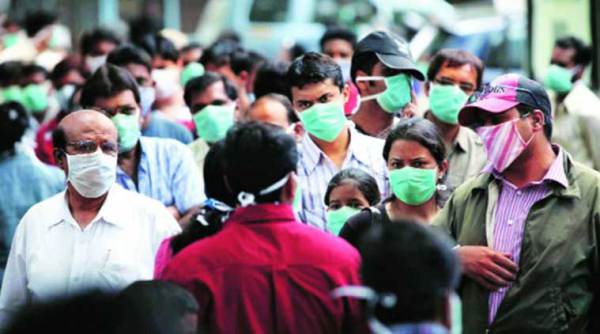
The world is highly vulnerable to a severe flu pandemic and governments should increase surveillance, vigilance and preparedness, the World Health Organization (WHO) warned in a new report.
“Nothing about influenza is predictable – including where the next pandemic might emerge and which virus might be responsible,” the WHO cautioned, while noting the next pandemic could be worse than the 2009 swine flu outbreak that killed over 284,000.
It said the world was fortunate that the last flu pandemic, caused by H1N1 swine flu in 2009/2010, was relatively mild, but added: “Such good fortune is no precedent”.
In a seven-page report on flu, WHO said that on many levels, the world is better prepared now than ever before for a flu pandemic. The level of alert is high, it said, and there is better surveillance of flu viruses in both animals and humans.
In 2014, the WHO’s Global Influenza Surveillance and Response System, made up of 142 laboratories in 112 countries, tested more than 1.9 million clinical specimens. “By keeping a close watch over the volatile world of influenza viruses, these laboratories operate as a sensitive early warning system,” the report said.
In the report, titled “Warning: Be prepared for surprises”, WHO praised progress in virological research that had increased capability to detect, understand and assess new viruses for pandemic risk, and to track their international spread.
But it said this needed to be stepped up. “More (research and development) is needed to develop better vaccines and shorten the production time,” it said, adding that during a severe pandemic, many people would die in the three to four months currently needed to make effective vaccines.
“An influenza pandemic is the most global of infectious disease events currently known,” the report said. “It is in every country’s best interests to prepare.”
‘The world needs to be concerned’ about avian influenza
This year’s seasonal flu season has been bad in many parts of the world, with Asia, the Americas and Europe reporting high levels of circulating flu viruses and low levels of protection from vaccines that did not match the relevant strains.
The WHO said it is particularly concerned about avian influenza, noting that the diversity and geographical distribution of influenza viruses currently circulating in wild and domestic birds are unprecedented. “The world needs to be concerned,” it said.
The highly pathogenic H5N1 avian influenza virus, which has been causing poultry outbreaks in Asia almost continuously since 2003 and is now endemic in several countries, is the influenza virus of greatest concern for human health. So far, 23 cases of H5N1 resulting in 11 deaths have been confirmed in 2015.
Over the past two years, H5N1 has been joined by newly detected H5N2, H5N3, H5N6, and H5N8 strains, all of which are currently circulating in different parts of the world.
Growing swine flu outbreak in India
Meanwhile, the WHO has said it is “carefully watching” the current swine flu outbreak in India. In just two months, nearly 21,000 people have been infected and more than 1,100 died as swine flu has spread rapidly through India’s dense population.
Many parts of India including Mumbai are facing a shortage of laboratories for testing swine flu and isolation units. While the government has said that government hospitals are equipped for tests, in many cities people are being sent away to private labs charging more than $75 (Rs 5,000) for the test.
Furthermore, although government health officials have said that there is enough medication available to treat the influx of cases, some hospitals have reported shortages—potentially due to individuals stockpiling the drug as the outbreak worsens.
Some experts have also raised concerns that the virus may have become more aggressive and could be acquiring resistance to oseltamivir (brand name Tamiflu), the main drug used to treat H1N1. According to the Centers for Disease Control and Prevention, sporadic cases of oseltamivir-resistant H1N1 have been reported, and limited transmission of the drug-resistant strain was observed during the 2009 pandemic.
